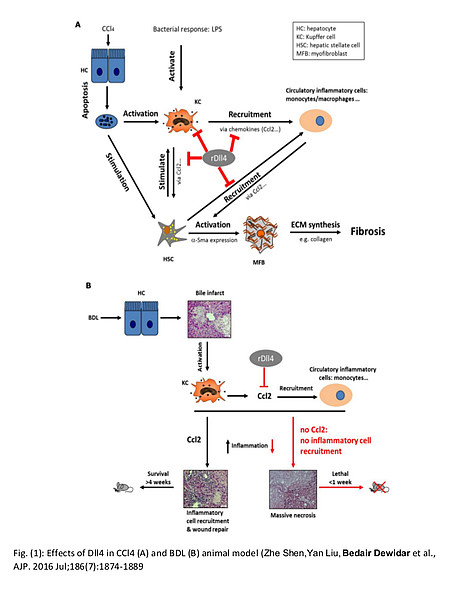Sie befinden sich hier
Inhalt
Notch signaling is involved in cellular differentiation and proliferation. In human, four Notch receptors (Notch-1, -2, 3, and -4) and five Notch ligands (Jagged-1, Jagged-2, Delta like ligand (Dll)-1, Dll-3, and Dll-4) have been identified. After binding of the Notch receptor to its ligand on an adjacent cell, certain proteolytic enzymes are activated. Consequently, Notch intracellular domain (NICD) is released and translocates into the nucleus, where it modulates gene expression. Although previous studies showed a potential role of Notch family genes in different liver diseases, e.g. liver fibrosis, hepatocellular carcinoma and hepatic ischemia/re-perfusion injury, the detailed molecular mechanism of this signaling pathway has not been clearly elucidated.
I am focusing on investigating the effects and roles of notch ligands in liver injury and inflammation. Recently, we found that Dll4 provides opposite effects in two different animal models of liver injury (CCl4 and BDL). While it improved the outcome of CCl4-induced fibrosis, all BDL mice that received Dll4 died within one week. This paradoxical response was related to the ability of Dll4 to interfere with chemokine secretions, mainly CCl2, and infiltration of inflammatory cells into the liver as explained in figure 1.
We are investigating now other notch ligands, their effects and the molecular mechanisms behind to understand the role of this complex signaling pathway in liver diseases with the hope of developing new diagnostic and therapeutic approaches.

